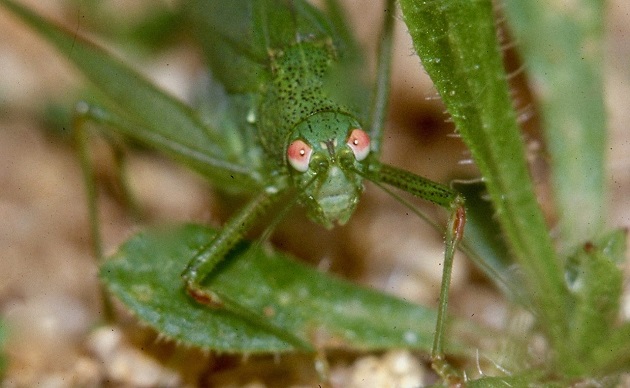A Biblical animal called Argol
There were insects that could be eaten, such as various types of winged locusts, which the New Testament also refers to as the food that John the Baptist ate.
06 MAY 2018 · 10:00 CET

All flying insects that walk on all fours are to be regarded as unclean by you. There are, however, some flying insects that walk on all fours that you may eat: those that have jointed legs for hopping on the ground. Of these you may eat any kind of locust, katydid, cricket or grasshopper. Leviticus 11:20-22
One of the general characteristic features of insects is the fact that they have six legs. However, these verses “all flying insects that walk on all fours”. How should we understand this expression in the Old Testament? The Biblical author had just referred to the birds which, as everyone knows, only have two legs, so when he gets to the section dealing with these little animals that also fly, winged insects, meaning that, unlike birds, they walk on four (or more than two) legs (Leviticus 11:42).
The idea is that these miniscule quadrupeds have more limbs than birds. Of course the editor knows that such insects (locusts, crickets and grasshoppers) actually have six locomotive appendages. That is why the Bible specifies that they have “jointed-legs” in addition to these four limbs for the purpose of “hopping on the ground”. Therefore the total number of six legs would correspond to these four limbs plus the much larger ones, as perceived by the author of the text.
According to the law, flying insects, such as flies, wasps, bees, dragonflies, etc. could not be eaten. But there were other insects that could also fly, but could be eaten, such as various types of winged locusts, which the New Testament also refers to as the food that John the Baptist ate. The book of Leviticus is the only Biblical text which, in addition to the locust, also mentions other leaping and flying insects, such as the “cricket” and the “grasshopper”, which could be eaten.
What were these insects? It is not easy to know. Some authors have used the terms “cricket” and “grasshopper” to translate these terms [1]. However, it should be borne in mind that some crickets can fly while others can’t, either because they don’t have wings or because the wings they have are two small. Among the former, there are those that belong to the Tetigonioides family, while among the latter there are the typical dark-coloured field crickets whose rhythmic chorus are the soundtrack to so many warm summer nights.
These ones can’t fly and they are classified under the term Gryllodes. Therefore, the Argol that the Bible refers to could be some kind of winged Tetigonioid, which are still common in Israel, such as, for example, the Tylopsis liliifolia, or something like it.
The great Welsh theologian of the 17th and 18th centuries, Matthew Henry, while commenting on the ritual impurity which the Hebrews incurred by coming into contact with the corpses of non-kosher flying insects, wrote the following: “This impurity lasted until the night. And we must learn to renew our repentance every night for the sins we have committed during the day, and to reclaim the cleansing that is available in the blood of Christ for the contamination that they produce in our inner being, to ensure that we do not lie down in our impurity.” [2] These words might sound anachronistic in today’s relativistic society which places absolute value on the freedom of the individual, and its non-submission to any established norm. That said, Christians should always remember the words of the apostle Paul:
Do not conform to the pattern of this world, but be transformed by the renewing of your mind. Then you will be able to test and approve what God’s will is—his good, pleasing and perfect will. Romans 12:2
[1] Darom, D., Animals of the Bible, PALPHOT, Israel, p. 40.
[2] Henry, M., 1999, Comentario Bíblico de Matthew Henry, CLIE, Viladecavalls, Barcelona, p. 124.
Published in: Evangelical Focus - Zoe - A Biblical animal called Argol
